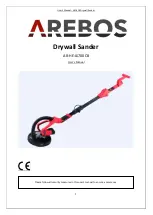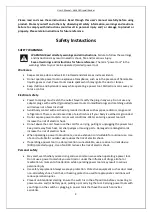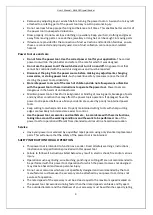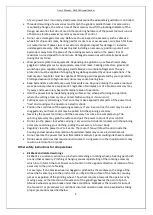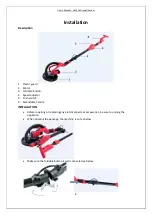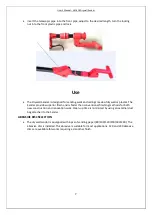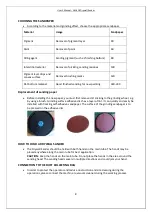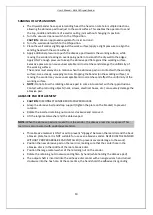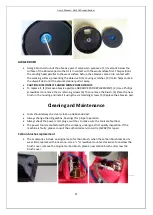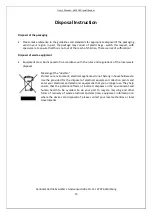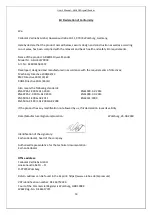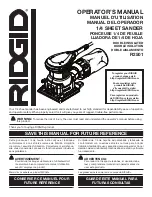
User’s Manual
–
A
REBO
S Drywall Sander
10
SANDING OF GYPSUM JOINTS
•
The Drywall Sander has a special sanding head: the head can rotate in multiple directions,
allowing the abrasive pad to adjust to the work surface. This enables the operator to sand
the top, middle and bottom of a wall or ceiling joint without changing its position.
1.
Turn the vacuum cleaner switch to the ON position.
CAUTION:
Wear an approved respirator for mist and dust.
2.
Turn the wall sander switch to the ON position.
3.
Place the wall sander slightly against the work surface (apply a slight pressure to align the
sanding head with the work surface).
4.
Apply additional pressure to push the abrasive pad towards the working surface, while
moving the sander creating an overlapping pattern to smooth the drywall to the edges.
Apply ONLY enough pressure to keep the abrasive pad flat against the working surface.
Excessive pressure can cause unacceptable micro scratches and damage the uniformity of
the working surface.
The sander must always be in motion when the abrasive pad is in contact with the working
surface. Use a steady, sweeping motion. Stopping the Sander (on the working surface), or
moving the sander may cause unacceptable micro scratches and affect the uniformity of the
working surface.
•
NOTE:
Do not allow the rotating abrasive pad to come into contact with sharp protrusions.
Contact with protruding objects (nails, screws, electrical boxes, etc.) can severely damage the
abrasive pad.
ABRASIVE PAD REPLACEMENT
•
CAUTION:
DISCONNECT SANDER FROM POWER SOURCE.
•
Grasp the abrasive belt and strap support (tighten the plate on the bracket) to prevent
rotation.
•
Rotate the inserted retaining nut counter-clockwise and remove it.
•
Lift the large metal washer and the abrasive pad.
NOTE:
When the abrasive pad is removed from the sander, the abrasive rear disc is exposed. This
rear disc is also covered with an abrasive material.
•
This abrasive material is ONLY used to prevent "slippage" between the rear disc and the back
abrasive plate foam. It is NOT suitable for use as an abrasive sander. NEVER USE THE SANDER
WITHOUT PROPER ABRASIVE PAD INSTALLED (to prevent severe damage to the work).
•
Position the new abrasive pad on the rear disc, making sure that the center hole in the
abrasive disc is in the middle of the rear abrasive disc.
•
Position the large metal washer of the retaining nut on the sander.
•
Rotate the retaining nut clockwise and tighten by hand (while holding the abrasive pad).
•
The output shaft is inserted into the adhesive disc center with an angle wrench and turned
clockwise into the hex hole. At the same time, the hands hold the adhesive disc grinding.

